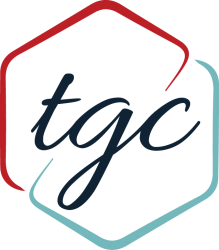The ball drops.
In a single moment, the curtain falls on my career as a collegiate athlete. As my teammates saunter onto the court to wish the opposing team a good game, a feeling of accomplishment and pride overwhelms me, despite my team’s loss in the conference championship.
In this moment, I suddenly realize that I have spent the last nine years of my life playing a sport that is essentially a glorified version of “don’t let the balloon touch the floor.”
Fear not!
I have avoided dwelling over this life-changing event by focusing my efforts on the exciting path ahead.
I proudly accepted a job as an account executive and editor for Tehama Group Communications. At first, I’m sure the staff was hesitant to let a Wildcat loose in the office, but I’m pretty confident that I’ve gained everyone’s trust by now.
So, in the burgeoning days of this new life direction, I have consolidated my learned experiences as a collegiate athlete into four main skills that have guided me as a public relations professional:
- Time management
I invite anyone who claims it is impossible to balance a social life, sleep schedule and heavy course load to consider the extra stress of an athletic commitment. Picture juggling these essentials while also enduring a weekly 12 hours of practice, three hours of weightlifting, two hours of analyzing game film and extensive travel on the weekends. Knowing how to manage your time and prioritize your tasks is vital when tackling the fast-paced world of PR.
- Communication
Whether it is telling a teammate to focus on the game or asking a writer to reword a sentence, effective communication is key. In order to communicate clearly and effectively, you must keep in mind the current situation, everyone involved and all potential outcomes. Understanding how patience, tone and empathy are required to be a good communicator helps me collaborate with clients and team members of various personality types and backgrounds.
- Leadership
Take this gaggle of girls and help them transition into a dependable, organized and motivated team. Molding the future faces of any program is an unspoken task bestowed upon every senior in his or her final season. In order to be a good leader, you must vocalize group strengths and weaknesses in a direct and respectful way while simultaneously leading by example. This is crucial now that I lead my own team of writers and creatives toward multiple project goals.
- Adaptability
It’s no secret that coaches appreciate adaptable players who are comfortable performing within a constantly changing landscape. If they tell you to run the darn play again, you do it with no hesitation. Quickly analyze the last play, figure out how to fix it, then execute immediately because another ball is coming your way now. Being adaptable in the world of PR is absolutely essential in an environment that moves furiously fast, where new problems arise by the minute. A happy client is synonymous to a happy coach, and both are integral to a successful and gratifying outcome.
By: Anna Baytosh
Photo provided by Chico State Sports Information Department
















